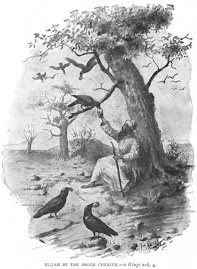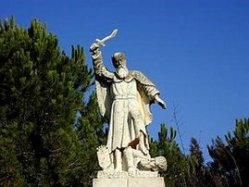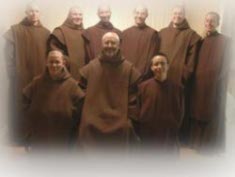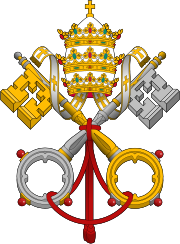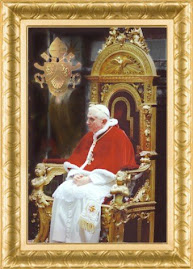 SAINT DOMINIC Founder(1170-1221)
SAINT DOMINIC Founder(1170-1221)Spiritual Bouquet: These things I have spoken to you that My joy may be in you, and that your joy may be made full. St. John 15:11
Saint Dominic de Guzman was born in Spain in 1170. As a student, he sold his books to feed the poor during a famine, and offered himself to ransom a slave. At the age of twenty-five, after taking the religious habit he became acting Superior of the Canons Regular of Saint Augustine in Osma, and was soon offered an episcopal chair at Compostella. He answered as afterward he also answered many times: “God has not sent me to be a bishop, but to preach.” He accompanied his prelate to southern France on a commission for the king of Castille. There his heart was well-nigh broken by the ravages of the Albigensian heresy, a variant of ancient Manicheanism, and the source of devastating wars in southern France. His life from that time on was devoted to the conversion of heretics and the defense of the Faith.
In the year 1199, while he was still a Canon Regular of Saint Augustine and was preaching near the Spanish coasts, he was taken captive, with all his audience and a Brother in religion, by a band of pirates. They placed the prisoners in their galleys at the oars. When a furious storm broke, the young Saint exhorted the disciples of Mohammed to think seriously of their souls, to open their eyes to the truth of Christianity, and above all, to invoke the Mother of God. They did not listen until his third exhortation, at a moment when it was clear the ship and passengers could not be saved. They swore to him then that if the God of Christians preserved them by the intercession of His Holy Mother, they would dedicate themselves to their service. Immediately the storm ceased, and the pirates kept their word.
When in his 46th year, and with six companions, he began the great Order of Preaching Friars, this Order with that of the Friars Minor, founded by his contemporary friend Saint Francis of Assisi, was the chief means God employed to renew Christian fervor during the Middle Ages. In addition, Saint Dominic founded his Second Order for nuns for the education of Catholic girls, and his Third Order, or Tertiaries, for persons of both sexes living in the world. God abundantly blessed the new Order, and France, Italy, Spain, and England welcomed the Preaching Friars. Our Lady took them under Her special protection. During a debate with the heretics, a book by the Saint, defending Her Immaculate Conception, was thrown into the flames along with one by the heretics, to see whether one might be spared. Saint Dominic’s was not injured, and many heretics were converted.
It was in 1208, while Saint Dominic knelt in the little chapel of Notre Dame de La Prouille, and implored the great Mother of God to save the Church, that Our Lady appeared to him and gave him the Rosary, bidding him to go forth and preach it. During the famous battles in southern France against the Albigensians, with his rosary in hand he revived the courage of the Catholic armies, led them to victory against overwhelming numbers, and finally subdued the heresy. His nights were spent in prayer; and, though all beheld him as an Angel of purity, before morning broke he would scourge himself to blood. His words rescued countless souls, and three times raised the dead to life. At length, on August 6, 1221, at the age of fifty-one, he gave up his soul to God.
Reflection: “God has never refused me what I have asked,” said Saint Dominic. How could God refuse to respond to the single intention of His Saints, which is His own — the salvation and sanctification of souls? Saint Dominic has left us the Rosary that we may learn, with Mary’s help, to ask what pleases God, and then to pray easily and simply with the same trust.
Sources: Les plus illustres captifs, by Rev. Fr. Calixte de la Providence, Trinitarian (Delhomme et Briguet: Lyons, 1892), Vol. I; Little Pictorial Lives of the Saints, a compilation based on Butler’s Lives of the Saints and other sources by John Gilmary Shea (Benziger Brothers: New York, 1894).
after www.magnificat.ca




